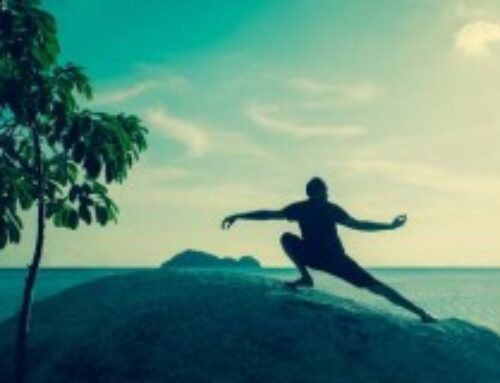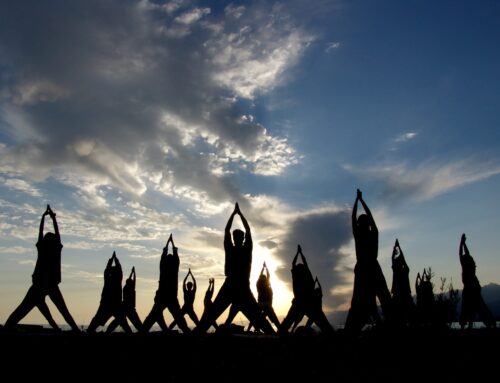Well its been a while but the sun is out and tonight (June 3rd) Tai Qi and Qi Gong at the Hope Centre.
We will be practising our 8 step and 8 treasures (Eight Pieces of Brocade or Baduanjin qigong). So come on down and have some Qi Fun!
Baduanjin qigong (Eight Treasures) is one of the most common forms of Chinese qigong used as exercise Variously translated as Eight Pieces of Brocade, Eight-Section Brocade, Eight Silken Movements and others, the name of the form generally refers to how the eight individual movements of the form characterize and impart a silken quality (like that of a piece of brocade) to the body and its energy. Baduanjin is primarily designated as a form of medical qigong to aid health and welbeing rather than a religious or martial forms of qigong.
This exercise is mentioned in several encyclopaedias originating from the Song Dynasty. The Pivot of the Way (Dao Shi, c. 1150) describes an archaic form of this qigong, the Ten Compilations on Cultivating Perfection (Xiuzhen shi-shu, c. 1300) features illustrations of all eight movements. The same work assigns the creation of this exercise to two of the Eight immortals, namely Zhongli Quan and Lü Dongbin.
The exercise was later expanded from eight to twelve movements over the centuries and was described in the boxing manual Illustrated Exposition of Internal Techniques (1882) by Wang Zuyuan, a famed practitioner of the Sinew Changing Classic set.
Nineteenth century sources attribute the style to semi-legendary Chinese folk hero General Yue Fei, and describe it as being created as a form of exercise for his soldiers. The legend states he taught the exercise to his men to help keep their bodies strong and well-prepared for battle. Prof. Meir Shahar notes Yue’s mention as a lineage master in the second preface of the Sinew Changing Classic manual (1624) is the reason why he was attributed as the creator of Baduanjin qigong.
Baduanjin has many forms, it is said that every village in China has its own unique variation on Baduanjin, but most of them follow a common set of exercises:
- Two Hands Hold up the Heavens (Shuang Shou Tuo Tian)
- This move is said to stimulate the “Triple Warmer” meridian (Sanjiao). It consists of an upward movement of the hands, which are loosely joined and travel up the center of the body.
- Drawing the Bow to Shoot the Hawk (or Vulture)
- While in a lower horse stance, the practitioner imitates the action of drawing a bow to either side. It is said to exercise the waist area, focusing on the kidneys and spleen.
- Separate Heaven and Earth
- This resembles a version of the first piece with the hands pressing in opposite directions, one up and one down. A smooth motion in which the hands switch positions is the main action, and it is said to especially stimulate the stomach.
- Wise Owl Gazes Backwards or Look Back
- This is a stretch of the neck to the left and the right in an alternating fashion.
- Sway the Head and Shake the Tail
- This is said to regulate the function of the heart and lungs. Its primary aim is to remove excess heat (or fire) (xin huo) from the heart. Xin huo is also associated with heart fire in traditional Chinese medicine. In performing this piece, the practitioner squats in a low horse stance, places the hands on thighs with the elbows facing out and twists to glance backwards on each side.
- Two Hands Hold the Feet to Strengthen the Kidneys and Waist
- This involves a stretch upwards followed by a forward bend and a holding of the toes. I personally use and teach a variant of this exercise that emphasises the drawing of Earth Yin and Heaven Yang to the Mingmen.
- Clench the Fists and Glare Fiercely (or Angrily) – Also called Fist Covering Heart
- This resembles the second piece, and is largely a punching movement either to the sides or forward while in horse stance. This, which is the most external of the pieces, is aimed at increasing general vitality and muscular strength.
- Bouncing on the Toes
- This is a push upward from the toes with a small rocking motion on landing. The gentle shaking vibrations of this piece is said to “smooth out” the qi after practice of the preceding seven pieces.




